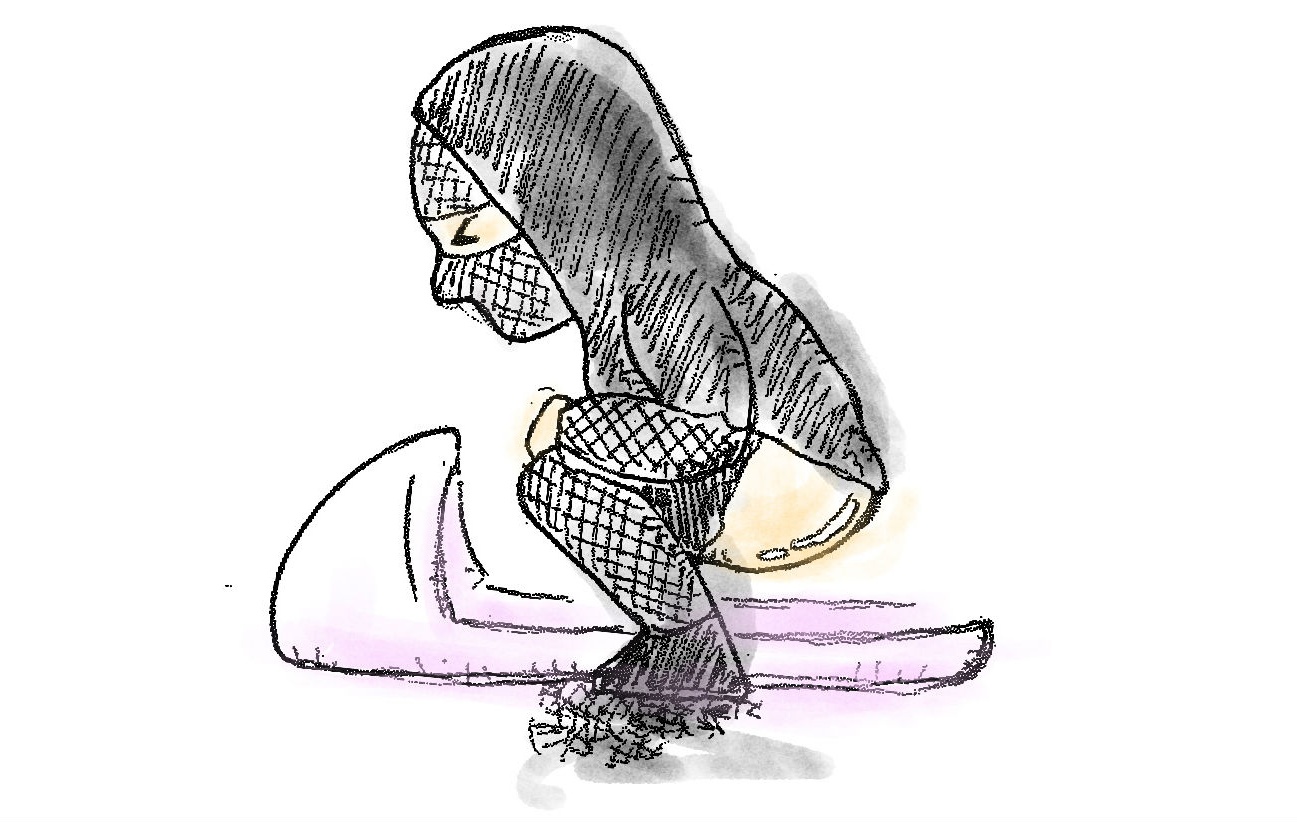The Ninja Guide to Japanese-Style Toilets

While Japanese-style toilets, or washiki toire, have been on the decline since the 1970s, they can still be found in older trains stations, office buildings and public schools. They’re not hard to use, but that first time does require a certain leap—or squat—of faith.
By Michael Kanert
https://ja.wikipedia.org/wiki/%E6%97%A5%E6%9C%AC%E3%81%AE%E4%BE%BF%E6%89%80
Domestic toilets became common in major Japanese cities starting in the Kamakura Period (1185–1333), and largely took the form of a rectangular hole in the floor that could be covered with a piece of wood to safely keep smells at bay. As time went on, this shape was merged with innovations in traditional pottery and modern water flow, resulting in a form still found lingering in the shadows today.

https://ja.wikipedia.org/wiki/%E6%97%A5%E6%9C%AC%E3%81%AE%E4%BE%BF%E6%89%80
The semicircular hood at the front end is called the kin-kakushi, which literally means genital cover. Perhaps appropriately to our warrior theme, it's the same term used for the codpiece on a suit of armor.
A good ninja faces the kin-kakushi, straddles the bowl, drops his or her pants all the way down to the ankles, and squats as close to the kin-kakushi as possible to ensure that there are no inaccurate assassination attempts at the rear. This requires a certain amount of balance—a key ninja skill that can be achieved by wrapping your arms around your knees.
Meanwhile, the necessity to bend all the way down ensures a fit, stealthy warrior—and the older you get, the more squats you have to do every day, perhaps revealing the secret to how all those old ninja masters were always ready to deliver a high kick.

Of course, you don't have to be a ninja to use a Japanese-style toilet—but you may need to be ready to be just a little limber!



